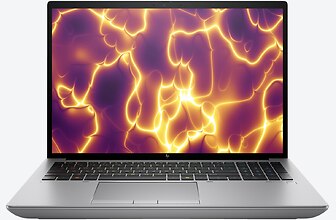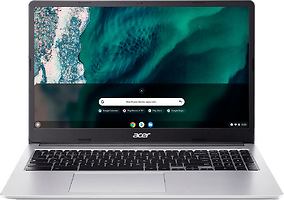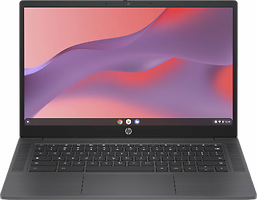Workstations
- What Distinguishes a Workstation From Other Office Laptops?
- Special Graphics Units for Workstations
- Large Displays between WUXGA and WQUXGA Resolution
- Powerful Processors and Plenty of Memory
- Lots of SSD Storage in Lareg Casings
- HP Workstations
- Workstations from Lenovo
Top 3 Workstations
 |  |  |
|---|---|---|
| HP ZBook Fury 16 G10 (62V64EA) | HP ZBook Fury 16 G10 (62V60EA) | HP ZBook Fury 16 G11 (98K67ET) |
| £3.234,00 | £2.106,00 | £2.280,00 |
| The IT Bay, incl. Shipping, Retailer details: — Last lowest price in 30 days in our price comparison: 3.234,00 € | The IT Bay, incl. Shipping, Retailer details: — Last lowest price in 30 days in our price comparison: 2.106,00 € | The IT Bay, incl. Shipping, Retailer details: — Last lowest price in 30 days in our price comparison: 2.280,00 € |
| 16" IPS, display, anti-glare, ips, low blue light, uwva, srgb (1920 x 1200, WUXGA, 60 Hz) | 16" IPS, display, anti-glare, ips, low blue light, uwva, srgb (1920 x 1200, WUXGA, 60 Hz) | 16" IPS, display, anti-glare, ips, micro-edge, low blue light, uwva (1920 x 1200, WUXGA, 60 Hz) |
| Intel Core i9-13950HX / 1,6 GHz (24 Cores) | Intel Core i7-13700HX / 1,5 GHz (16 Cores) | Intel Core i9-13950HX / 1,6 GHz (24 Cores) |
| NVIDIA RTX 4000 Ada - 12GB (12 GB) | NVIDIA RTX A2000 - 8GB (8 GB) | NVIDIA RTX 2000 Ada (8 GB) |
| 32 GB RAM (DDR5 - 5600 MHZ) | 32 GB RAM (DDR5 - 5600 MHZ) | 32 GB RAM (DDR5 - 5600 MHZ) |
| 1 TB SSD | 1 TB SSD | 1 TB SSD |
| 2,4 kg | 2,4 kg | 2,4 kg |
| - | - | - |
What Distinguishes a Workstation From Other Office Laptops?
Just because you need a laptop for professional use doesn't necessarily mean you need a cost-intensive workstation. Workstations only become relevant if the device is to be used for computing-intensive applications such as 3D design, CAT modelling, computer simulations, video editing and rendering. Some other laptops can even do this on a small scale, while the workstations are solely designed for this and still do a better job at it. So if you are only looking for a laptop to work with, where such tasks are not the main focus, it may be worth taking a look at our Ultrabooks or Business Laptops.
Special Graphics Units for Workstations
Special graphics units are installed in workstations to cover said areas of application. Specifically, these are NVIDIA graphics cards from the RTX-A series. The R stands for raytracing - the graphics chips can raytrace in real time. They have up to 20 GB of dedicated graphics memory and are both more space-saving and more energy-efficient than GeForce RTX models, for example. They are designed to work with complex models and data sets, run simulations, are suitable for VR and have AI.
Large Displays between WUXGA and WQUXGA Resolution
There is a wide variety of screens for workstations. The resolutions range from WUXGA (1,920 x 1,200 pixels) to WQXGA (2,560 x 1,600) and WQUXGA resolution (3,840 x 2,400). The standard refresh rate is 60 Hz, but faster panels with up to 165 Hz are also available. The limit is 240 Hz. Which screen you choose depends crucially on how you want to use the machine. If you have other high-resolution displays with high refresh rates in your working environment and want to connect your workstation to them, the device itself does not need the best display technology. For professional use, however, the rather large displays are almost indispensable: Workstations on the market are currently 14 to 16 inches in size.
Powerful Processors and Plenty of Memory
Also apart from the graphics card and the display, the hardware for workstations is in the top segment. With the processor (CPU) you get at least eight to ten processor cores from AMD and Intel. However, most workstations use more cores. You get more performance with more cores. There is plenty of room for improvement, and processors with up to 24 cores are sometimes installed. As a rule, these processors have the remote management technologies of the respective manufacturers – Intel vPro and AMD PRO are the keywords here – with which IT departments can maintain and manage the device remotely. With RAM, you often have the option of upgrading later. The speed doesn't play a major role here, the capacity is important: eight gigabytes of RAM is enough in an emergency, especially as the graphics units have their own graphics memory but we don't recommend it. With 16 GB you are on the safe side. However, many of the models also have 32 GB of RAM, which means you can easily run several performance-intensive applications simultaneously.
Lots of SSD Storage in Lareg Casings
The same applies to the SSD: the minimum you get from workstations here is always sufficient. There are no devices in this category that are delivered with less than 1 TB of fixed storage, most have 2 TB of storage capacity. Some even have space for a second SSD in their casing. With all this powerful hardware, the devices are of course not the most portable. However, the high-quality housings are never too bulky and can keep the weight of the workstations at around 2.5 kilograms.
HP Workstations
HP has created its own model series for workstations. The workhorses can be found in the ZBook model series. HP offers a wide range of devices with 14 to 16-inch displays in Full HD to 4k resolution. At least 16 GB of RAM are installed and support processors with at least eight cores.
Workstations from Lenovo
Workstations, however, have not been given their own model series at Lenovo. Here you can find the devices within the ThinkPad model series. The series in which you will find workstations are the P-series. Lenovo has a similarly broad range to HP, but also offers devices with eight GB of RAM or two SSDs. You should have already found the right workstation among our favourites. Size, price, performance – if you have very specific requirements, simply use our configurator. Let's get to work!





